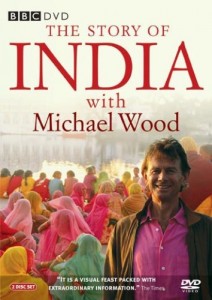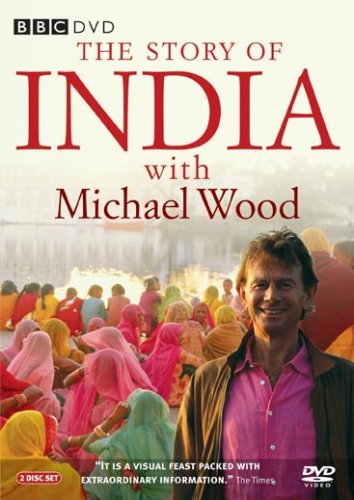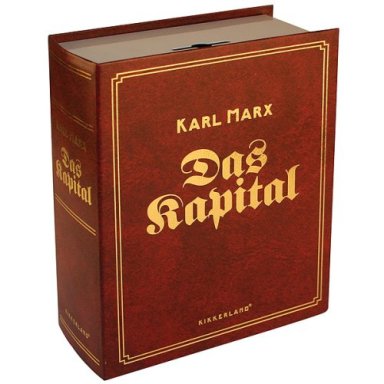by Deepa Venkatraghvan
[box]Deepa Venkatraghvan talks about ‘The Story of India,’ a PBS-BBC documentary that leads her to discover sides to India she never knew about, and what we as Indians can learn from our own history as our country grows in clout internationally.[/box]If India needs to learn a few lessons to revive her journey toward becoming a superpower, she only needs to turn to her own glorious past. And that past is beautifully described in ‘The Story of India’, a PBS-BBC documentary by historian Michael Woods that changed me forever.
 The series packs in so much about the history of India – the culture, habits, lifestyles, philosophy – that you will know why India is the way she is and more importantly, what we can do to take India back to her path of glory. In six episodes, the extremely passionate Michael Wood taught me so much about my country and left such a deep impression; I don’t think any other book, movie or medium has managed to impact me as much. And for that sole reason, I urge you to watch it. And because you can watch it for free here, you can start right now.
The series packs in so much about the history of India – the culture, habits, lifestyles, philosophy – that you will know why India is the way she is and more importantly, what we can do to take India back to her path of glory. In six episodes, the extremely passionate Michael Wood taught me so much about my country and left such a deep impression; I don’t think any other book, movie or medium has managed to impact me as much. And for that sole reason, I urge you to watch it. And because you can watch it for free here, you can start right now.
Wood begins at the ‘Beginning’. And that beginning does not begin with British India or Mughal India or even the Guptas, Mauryas, Greeks or Aryans. It begins with the beginning of mankind. And for me, this was the most enlightening of all six episodes.
When man first migrated out of Africa, 70 or 80 thousand years ago, he first landed in India and from there, spread to the rest of the world. And fascinatingly enough, Wood tells us how India is the only country to have preserved the unbroken thread of the human story. That story is in the form of sounds from the beginning of human time. An ancient clan of Brahmins in Kerala has, over generations, passed on oral recitals of some sort of verse. And since these sounds are incomprehensible, there is no written record. Only recently, the clan permitted outsiders to record the recitals to try to understand the origins. And the results were astonishing. They found that the sounds followed rules and patterns but had no meaning. There were no parallels to these sounds in any human activity, not even music. The nearest analogy was from the animal kingdom – they resembled sounds of birds – from a time much before language developed. While historians came upon this finding, scientists made another discovery. The M130 gene, which is the marker of the first human migration that took place in India, is found even today in the people of Tamil Nadu.
With that explosive beginning, Wood takes a leap of tens of thousands years to the beginning of civilisation. The process of civilisation began in India in 7000 BC, but came to the light of archeologists only in the 1920s. Before the discovery it would have seemed incredible to think that the ancient civilisation of India was far older than the Bible, Romans or Greeks. The Europeans saw India as a primitive, backward place. They believed civilisation was a product of the classical world for which they were the modern standard bearers. But all that changed in 1921 with the discovery of the Harappan civilisation. The Harappan civilisation was the hallmark of a sophisticated and technologically advanced urban culture.
To my mind, it was obvious then to conclude that infrastructural planning, strategy and efficiency are not traits of the western world alone and certainly not something only Ivy league schools can teach. It is simply inherent in us. Ancient Indians have proved it; we only need to revive that magic to make smarter cities.
Part two of the series, ‘The Power of Ideas’ looks at the changes in the religious ideals of India. For centuries, until the 5th century BC, India had been following the caste system that fixed jobs and a person’s place in society. It was believed that salvation only came from following this order and following rituals. But these beliefs started getting questioned around the 5th century BC when ethics became the centre of the world. Thinkers arose, as did rationalists, skeptics and atheists – and among them emerged the Buddha and Buddhism. Over a period of time, India has been the birthplace of four of the world’s religions – Sikhism and Jainism, in addition to Hinduism and Buddhism. While Jews and Zoroastrians were discriminated in other parts of the world, India welcomed them with open arms.
Traditionally, we were liberal enough to encourage and allow the birth of these new religions. Dynasties that managed to achieve a balance between religious tolerance and economics were successful. The rest were challenged anyway. In our recent history, religious intolerances have been fuelled by political misgivings rather than any conflicts of essence. And that is why it is important for us, as electoral citizens of India, to understand our history, so that we can challenge these politicians and pave the way for a peaceful India.
Part three turns the corner in India’s story. It’s the rise of the wealthy Roman Empire and in turn the advent of India’s trade with the world – ‘The Spice Roads and Silk Routes’. Three things changed the course of Indian history – silk, rice and pepper. The Silk Route was controlled by a new tribe, the Kushan Empire, whose capital was Kabul. By the 2nd century AD, the Kushan Empire had conquered most of North India. The Kushans brought peace and religious tolerance and with this peace they could foster the arts, literature and science. They were behind the development of Sanskrit as the language of international scholarship in the East. Medicine, specifically Ayurveda, was also an important area of their patronage.
Part four is called ‘The Ages of Gold’ – 4th century AD. It was a dark period in the West as the Roman Empire had fallen and people feared the end of civilisation. But in India the Gupta dynasty had brought in a golden age of arts, culture and literature. The Gupta age is also a mark of technological advances – the hallmark being the 35 foot iron pillar in Delhi. Indians were the masters of metallurgy, that too, about 1500 years before the industrial revolution. Gupta scientists pioneered the use of zero; a Gupta astronomer around 500 AD, Aryabhatta, proved that the earth went around the sun; Aryabhatta also came up with the concept of Pi. All this was driven by the curiosity to understand the cosmos. The most famous product of the Gupta dynasty is the Kamasutra; that, at a time when sex in the Western Christian civilisation was associated with guilt. As Wood explains, the Kamasutra was a product of an age where there was freedom of thought and that, was a mark of a high civilisation.
Part five, ‘The meeting of two oceans’ takes a modern turn and tells the story we have all learnt in great detail in our history books – that of the Mughal Era (1000 AD to 1500 AD), and the coming of Islam that wrote the next story of Indian history.
While the legacy of any invasion is often destructive, the Mughals, at their best created a fusion of Hindu and Islamic culture. And this integration would be the key aspect of a successful Mughal Emperor’s rule. Under Akbar’s rule, India enjoyed much cultural and economic progress as well as religious harmony. Akbar in fact brought together the religious learnings of Hindus, Muslims, Buddhists, Jains and Sikhs. The reign of his son Shah Jahan was the golden age of Mughal architecture and the arts. But many of these policies were rejected by Aurangazeb whose prime focus was ruthless expansion of his regime. This was one of the main reasons the Mughals began facing resistance. As their might reduced and as the British came to India, we enter the final chapter in India’s story.
The concluding part six, ‘Freedom,’ then goes on to talk about the final invasion in India’s history – the British Era. We all know that British primarily capitalized on India’s resources and pool of skilled labour of weavers, farmers, artists etc. and more often than not, quite ruthlessly. But the greatest legacy of the British was to give India a new idea of India itself. India at the time of early British rule was divided into various colonies and kingdoms. The British showed India this map which got the people of India united as one nation. In the early days of the freedom struggle, Hindus and Muslims joined together against the oppressive British rule. But complete integration took a long time in coming because many Indians saw British rule as progressive while others saw it as oppressive. And finally when the idea of independent India started to form, religious differences arose and finally marred the freedom story, which would otherwise have been a romantic one.
The last 50-60 years in India’s history have largely been grey with a few recent decades of promise, confidence and a sense of the possible. What lessons can today’s India learn from her past to forge ahead? A few common traits run through all of India’s dynasties and eras – peace, religious tolerance, a high focus on arts, literature, science and culture and innovative thought driven by curiosity to understand the world around us.
In the last few decades, India has also been wary of forging international ties, whether it is foreign investment or economic deals like the India-U.S. nuke deal – understandably so, after being subject to so many invasions, the most recent being the ruthless British rule. But wariness must be used as a strength to blend with the global scene. We must proceed, with caution. No point in saying no. After all, India’s silk and spice routes too developed because of the wealth of the Roman Empire.
And as Wood says, ‘Commerce is never just about commodities. It is about the way civilisations grow and adapt, discover new ideas and new worlds.’
Deepa Venkatraghvan, a chartered accountant, loves to write. She works in the media and when she is not writing about smart investing, she pens her thoughts about life’s experiences. You can check out her personal finance blog at http://blogs.ec






